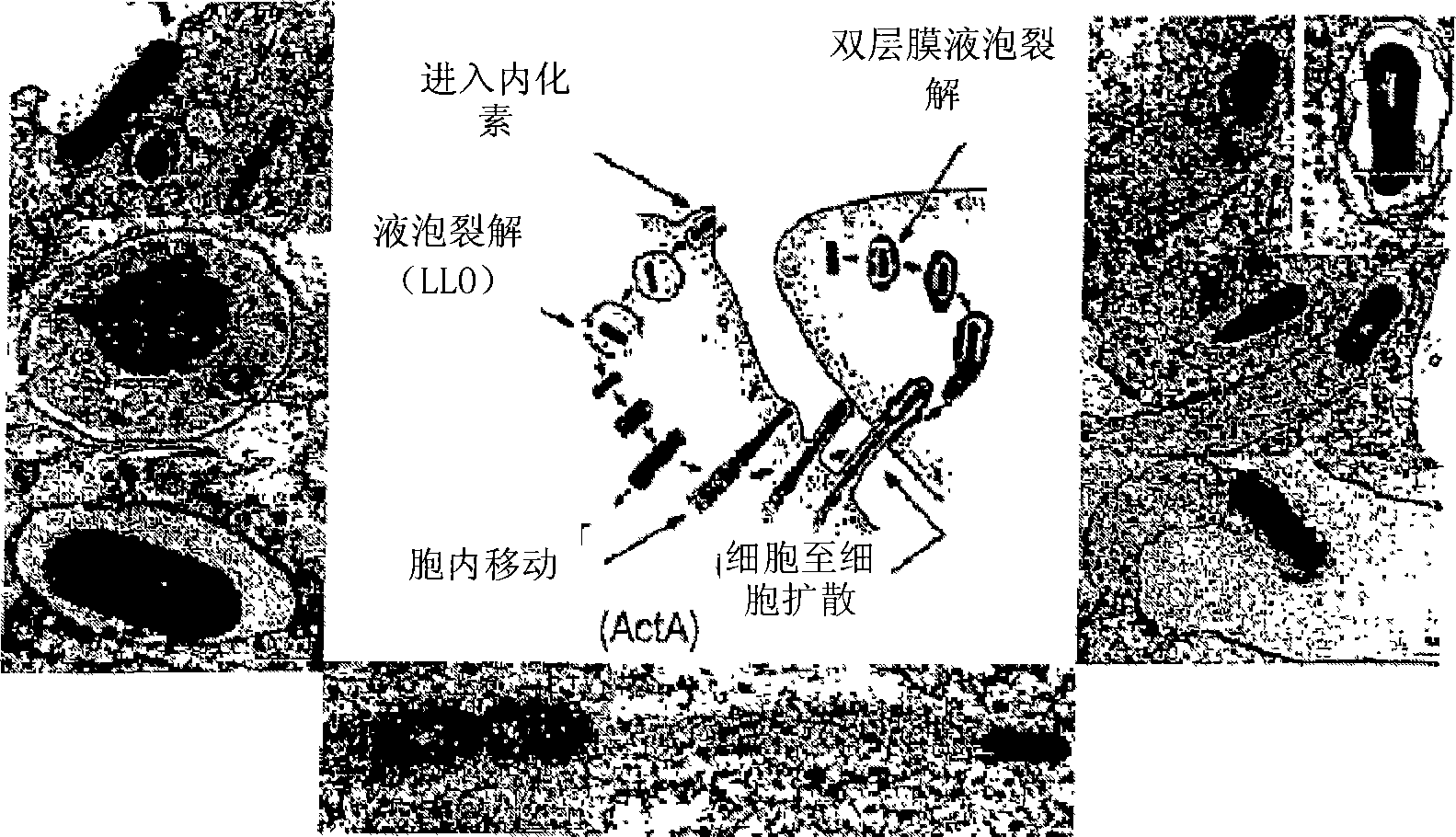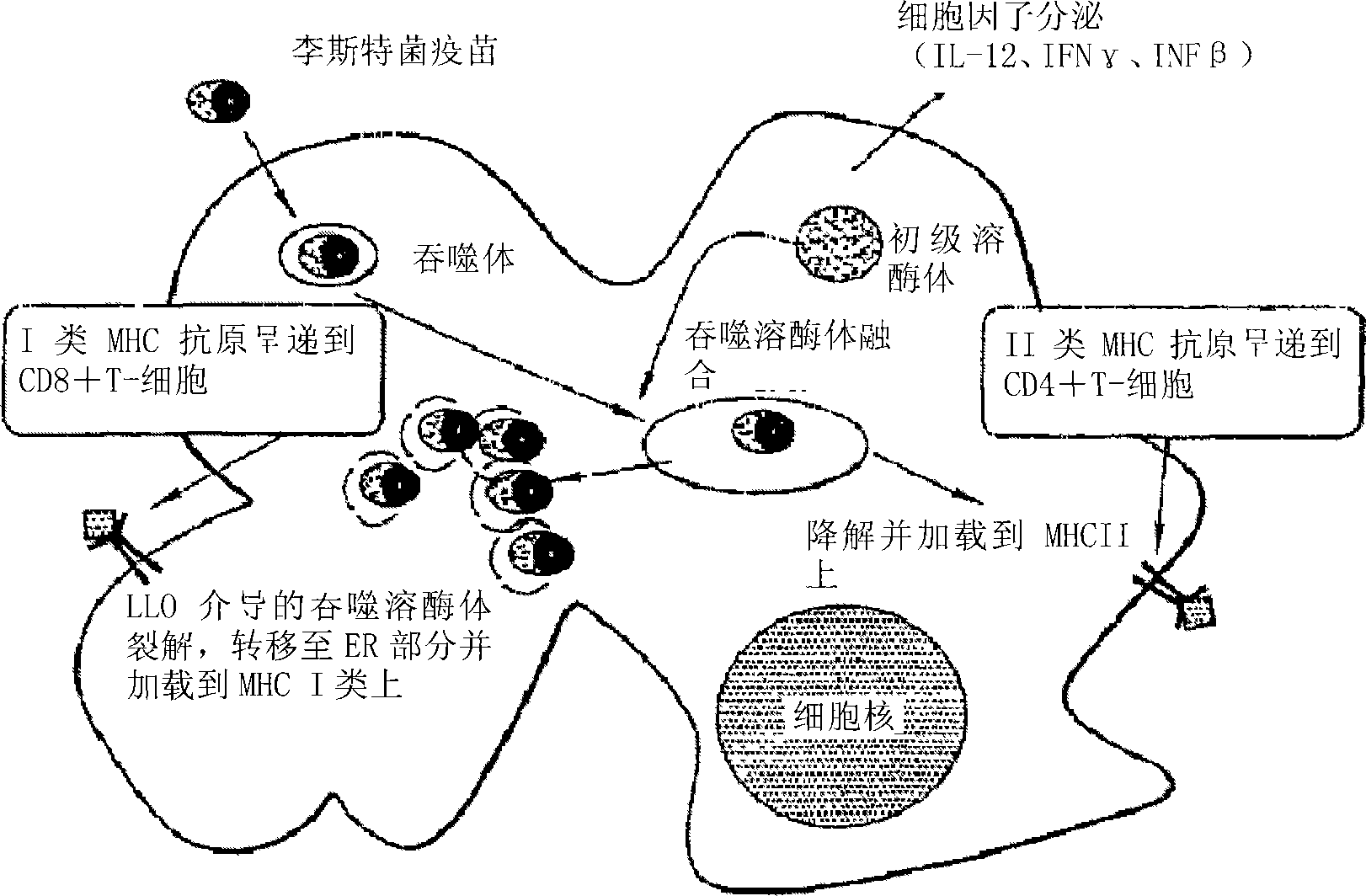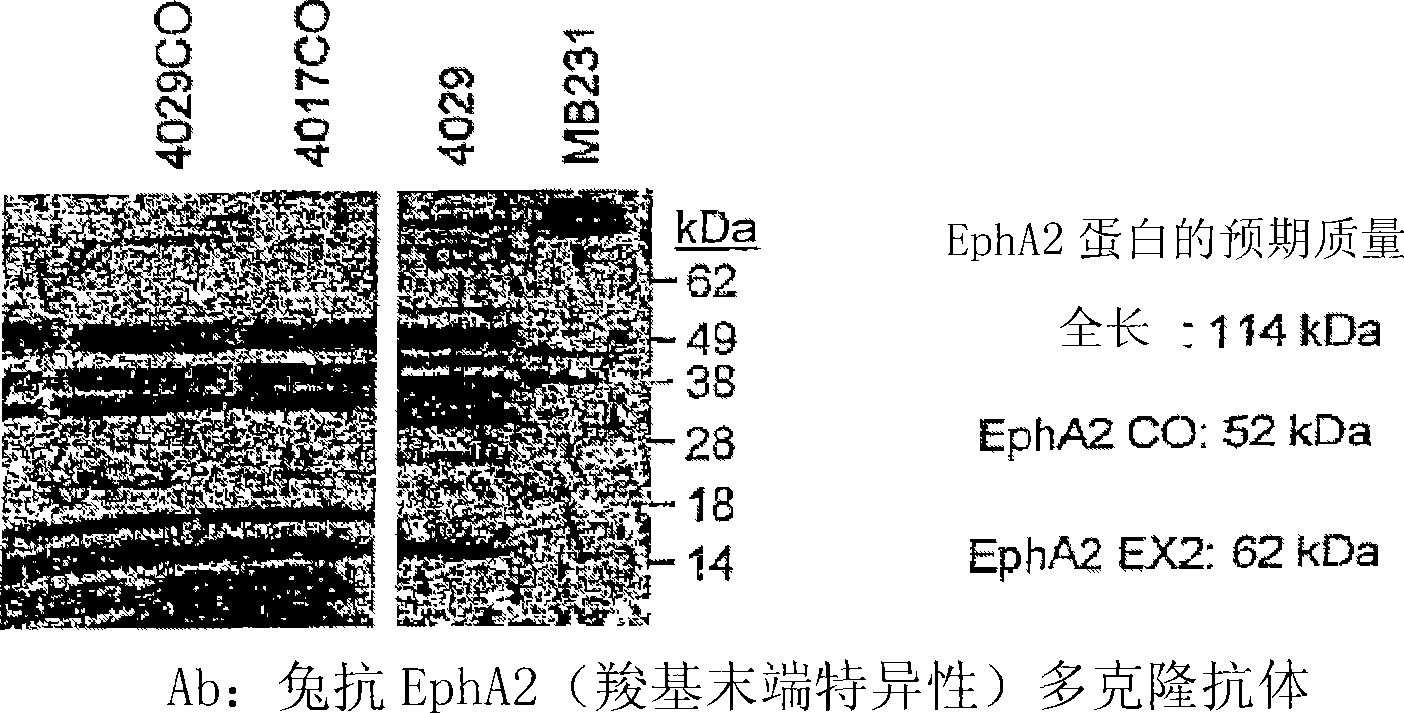Listeria-based EphA2 vaccines
A Listeria, immune response technology, applied in the control or prevention of proliferative cell disease, therapeutic field, able to solve problems such as stenosis
- Summary
- Abstract
- Description
- Claims
- Application Information
AI Technical Summary
Problems solved by technology
Method used
Image
Examples
Embodiment 1
[0483] 6.1. Example 1: The life cycle of Listeria
[0484] Figures 1A-1B The life cycle of Listeria monocytogenes, including the steps of endocytosis, phagolysosome lysis, and cell-to-cell spread, is shown in .
Embodiment 2
[0485] 6.2. Example 2: Construction of expressing EphA2 and control Listeria strains
[0486] 6.2.1. Background
[0487] According to the mechanism of heterologous antigen presentation by Listeria through the MHC class I pathway, the expression of heterologous genes and the efficiency of newly synthesized proteins secreted from bacteria into the cytoplasm of infected (antigen-presenting) cells are closely related to CD8+ T cells. is directly related to the intensity of priming and / or activation. Since the level of Ag-specific T cell priming is directly related to the efficacy of the vaccine, the efficiency of heterologous protein expression and secretion is directly related to the strength of the vaccine. Therefore, the efficiency of EphA2 expression and secretion is optimized to maximize the effectiveness of Listeria-based vaccines in terms of initiating and / or activating CD8+ T cell responses specific to the encoded EphA2 protein.
Embodiment 3
[0591] 6.3. Example 3: Generation of mouse tumor cell lines expressing human EphA2
[0592] 6.3.1. Background
[0593] A mouse immunotherapy model was established for testing the Listeria-based vaccines of the present invention. Three mouse tumor cell lines, CT26 mouse colon carcinoma cell line, B16F10 mouse melanoma cell line and RenCa mouse renal cell carcinoma cell line, were established to express high levels of huEphA2 protein. FACS cell sorting analysis was performed to identify CT26, B16F10 and RenCa tumor cells expressing high levels of huEphA2, pooled and analyzed by Western blot analysis. Clones were further pooled by FACS cell sorting to generate subclones expressing high levels of huEphA2.
[0594] 6.3.2. Selection of CT26 mouse colon cancer cells expressing huEphA2 at a high level
[0595] 6.3.2.1. Lipofectamines TM Transfection analysis of
[0596] Use standard transfection techniques with commercially available Lipofectamine TM , CT26 cells were transfecte...
PUM
 Login to View More
Login to View More Abstract
Description
Claims
Application Information
 Login to View More
Login to View More - R&D
- Intellectual Property
- Life Sciences
- Materials
- Tech Scout
- Unparalleled Data Quality
- Higher Quality Content
- 60% Fewer Hallucinations
Browse by: Latest US Patents, China's latest patents, Technical Efficacy Thesaurus, Application Domain, Technology Topic, Popular Technical Reports.
© 2025 PatSnap. All rights reserved.Legal|Privacy policy|Modern Slavery Act Transparency Statement|Sitemap|About US| Contact US: help@patsnap.com



